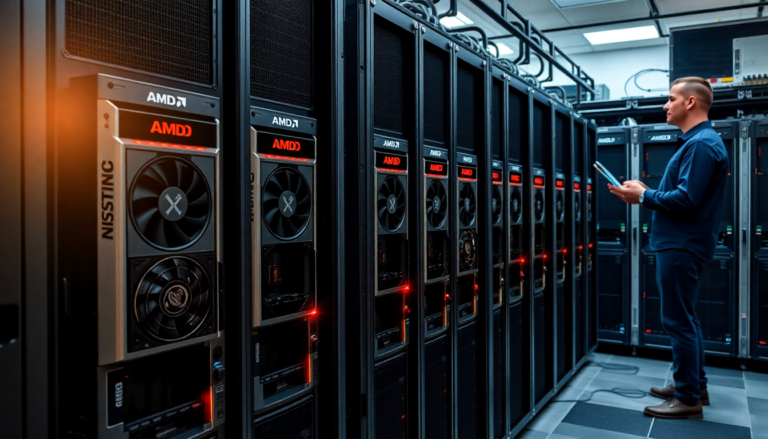Argomenti trattati
The integration of advanced hardware technologies in modern data centers has dramatically reshaped the landscape of high-performance computing. As companies increasingly turn to powerful GPUs—particularly AMD Instinct accelerators—understanding the implications of their substantial VRAM capacities on overall system performance is more crucial than ever. Have you ever wondered how these massive memory specs affect operations, especially during hibernation cycles? Recent discussions around hibernation failures in Linux servers due to excessive VRAM highlight a vital intersection of technology and operational efficiency.
Market Overview: The Role of VRAM in Data Centers
Virtual Random Access Memory (VRAM) is a key player in ensuring the smooth operation of high-performance GPUs. In environments that require extensive processing power—think artificial intelligence (AI) and scientific workloads—the demand for robust VRAM is paramount. For instance, AMD’s Instinct accelerators can boast VRAM capacities that exceed 192GB per card, with some configurations reaching an astonishing 1.5TB across multiple units. While this impressive capacity is designed to tackle demanding tasks efficiently, it can inadvertently cause complications, particularly during the hibernation process.
The crux of the issue lies in how Linux manages GPU memory when a server goes into hibernation. When this occurs, the system attempts to offload GPU memory to RAM, which can lead to a significant spike in memory usage. This redundancy often results in a scenario where the total memory requirement exceeds the physical memory available, causing hibernation to fail. Understanding these dynamics is crucial for data center operators who need to balance the benefits of high VRAM with the operational realities of their infrastructure.
Analyzing the Root Causes of Hibernation Failures
As AMD engineer Samuel Zhang highlights, the core issue isn’t just the quantity of VRAM; it’s also about how Linux processes this memory. During hibernation, the Graphics Translation Table (GTT) or shared memory is used to transfer GPU memory into system RAM, effectively creating a copy of all memory content. In servers equipped with high VRAM configurations, this duplication can inflate memory usage significantly beyond physical limits, leading to hibernation failures.
This situation raises important questions about the operational practices of high-performance servers. While many AI servers are designed for continuous operation, the ability to hibernate them can be beneficial in reducing power consumption during downtimes. This is especially relevant given the growing energy demands of large-scale data centers, which can contribute to grid instability—just look at the recent blackouts in regions like Spain.
Proposed Solutions and Future Implications
In light of the hibernation challenges presented by excessive VRAM, Zhang has proposed two primary changes aimed at optimizing this process. The first involves reducing the system memory requirement during hibernation, which could pave the way for successful execution of the process. However, this adjustment does introduce a new complication: the “thawing” stage, which could extend the time it takes for the system to resume from hibernation to nearly an hour. Can you imagine waiting that long for your system to reboot?
To tackle this issue, a third patch has been introduced, designed to bypass the restoration of certain buffer objects during the thaw phase. This improvement significantly reduces the time needed to resume operations, offering a more viable solution for data centers that seek to balance performance with operational efficiency.
As data centers continue to evolve, grasping the intricate relationship between VRAM, system performance, and energy consumption will be essential. By addressing these challenges head-on, operators can not only enhance the reliability of their infrastructure but also optimize energy use, paving the way for more sustainable practices within the tech industry. Isn’t it exciting to think about how these advancements could shape the future of computing?

